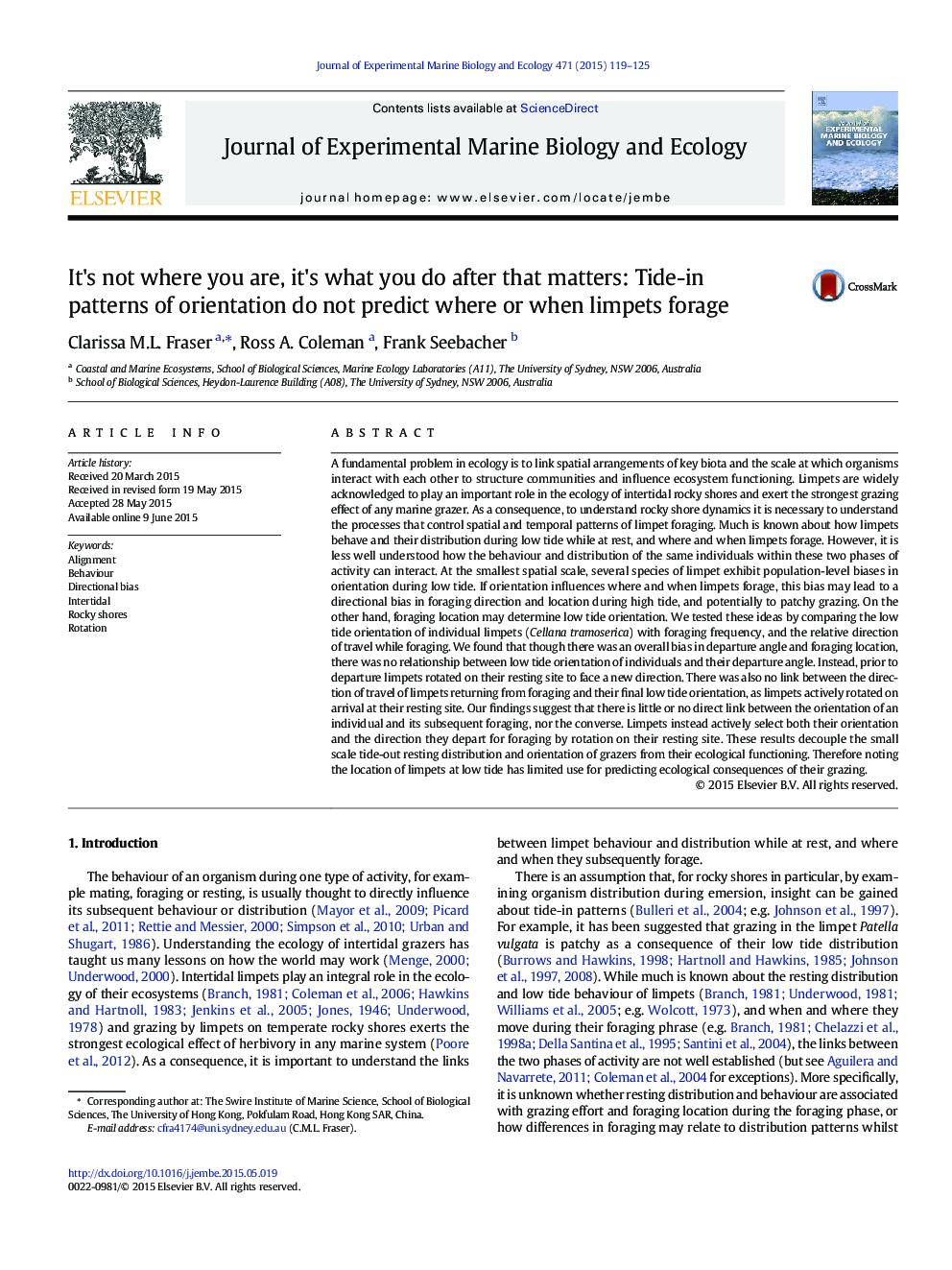| کد مقاله | کد نشریه | سال انتشار | مقاله انگلیسی | نسخه تمام متن |
|---|---|---|---|---|
| 6303861 | 1618404 | 2015 | 7 صفحه PDF | دانلود رایگان |
عنوان انگلیسی مقاله ISI
It's not where you are, it's what you do after that matters: Tide-in patterns of orientation do not predict where or when limpets forage
ترجمه فارسی عنوان
این جایی نیست که شما هستید، این چیزی است که شما بعد از آن انجام می دهید: الگوهایی که در جهت حرکت قرار دارند، پیش بینی نمی کنند که در کجا و یا زمانی که علوفه
دانلود مقاله + سفارش ترجمه
دانلود مقاله ISI انگلیسی
رایگان برای ایرانیان
کلمات کلیدی
هم ترازی، رفتار - اخلاق، تعصب جهت اینترتیالال، سواحل راکی، چرخش
موضوعات مرتبط
علوم زیستی و بیوفناوری
علوم کشاورزی و بیولوژیک
علوم آبزیان
چکیده انگلیسی
A fundamental problem in ecology is to link spatial arrangements of key biota and the scale at which organisms interact with each other to structure communities and influence ecosystem functioning. Limpets are widely acknowledged to play an important role in the ecology of intertidal rocky shores and exert the strongest grazing effect of any marine grazer. As a consequence, to understand rocky shore dynamics it is necessary to understand the processes that control spatial and temporal patterns of limpet foraging. Much is known about how limpets behave and their distribution during low tide while at rest, and where and when limpets forage. However, it is less well understood how the behaviour and distribution of the same individuals within these two phases of activity can interact. At the smallest spatial scale, several species of limpet exhibit population-level biases in orientation during low tide. If orientation influences where and when limpets forage, this bias may lead to a directional bias in foraging direction and location during high tide, and potentially to patchy grazing. On the other hand, foraging location may determine low tide orientation. We tested these ideas by comparing the low tide orientation of individual limpets (Cellana tramoserica) with foraging frequency, and the relative direction of travel while foraging. We found that though there was an overall bias in departure angle and foraging location, there was no relationship between low tide orientation of individuals and their departure angle. Instead, prior to departure limpets rotated on their resting site to face a new direction. There was also no link between the direction of travel of limpets returning from foraging and their final low tide orientation, as limpets actively rotated on arrival at their resting site. Our findings suggest that there is little or no direct link between the orientation of an individual and its subsequent foraging, nor the converse. Limpets instead actively select both their orientation and the direction they depart for foraging by rotation on their resting site. These results decouple the small scale tide-out resting distribution and orientation of grazers from their ecological functioning. Therefore noting the location of limpets at low tide has limited use for predicting ecological consequences of their grazing.
ناشر
Database: Elsevier - ScienceDirect (ساینس دایرکت)
Journal: Journal of Experimental Marine Biology and Ecology - Volume 471, October 2015, Pages 119-125
Journal: Journal of Experimental Marine Biology and Ecology - Volume 471, October 2015, Pages 119-125
نویسندگان
Clarissa M.L. Fraser, Ross A. Coleman, Frank Seebacher,
